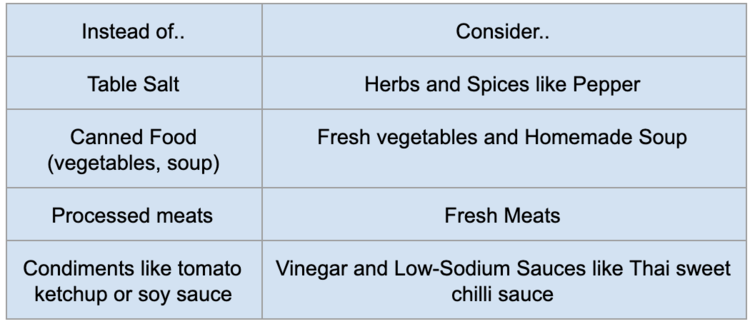Smart Choices: Salt
Salt is an important ingredient to enrich flavour in our food. Can you imagine cooking without it? Not to mention, salt is also an essential element of life that our body cannot produce naturally. Salt is also called sodium chloride (NaCl). It consists of 40% sodium and 60% chloride. Our body needs salt for the proper functioning of muscles, fluid balance, and nerve transmission. Salt also makes our kidneys retain water.
Too much salt leads to excessive water retention, raising our blood pressure and straining our kidneys, heart, brain, and arteries. Conversely, too little salt consumption or excessive water consumption that dilutes salt levels can cause hyponatremia which causes our cells to swell and leads to dizziness, confusion, cramps, and muscle twitches. However, due to an increase in processed foods, we tend to consume more salt than our body needs. Let’s find out more about the impact of salt on our health through this article.
Most of us ingest far more than the recommended amount of salt every day. That's because processed foods often have extremely high levels of sodium. “Hidden” salt accounts for around 75% of the salt we eat, only 25% comes from the salt we add while cooking or at the table.
What happens when you eat too much salt?
When you increase your salt intake, your body retains fluids. This can raise your blood pressure by increasing blood volume and can increase the workload on the heart. More specifically, sodium is the part that raises blood pressure. 1g of sodium is the same as 2.5g of salt.
What happens when you eat too little salt?
A diet low on salt is associated with elevated levels of bad cholesterol and insulin resistance. Therefore finding the right balance of salt in our diet is essential for our health.
Salt intake and hypertension
Most people with high blood pressure shouldn't eat more than 1,500 milligrams (mg) of sodium per day (⅔ teaspoon of salt). Even those at low risk for hypertension should keep their sodium intake at less than 2,400 mg per day — the amount of salt in one teaspoon (6 grams).
Different Types of Salts
Plain table salt
Sea salt
Kosher salt
Himalayan pink salt
The different types of salt may vary in taste, texture, and colour. If you are wondering which type is the healthiest, research shows that they are all quite similar.
Salty-Six
Even if your food doesn't taste salty, it still contains a deceiving amount of salt. Always check the packaging on sodium levels. Here is a list of 6 types of foods which (surprisingly) add the most sodium to our diet
Processed meats
Breakfast cereals
Vegetable juice
Canned soup and vegetables
Flavoured packets and condiments
Bread
How to eat less salt
Excessive salt intake can be harmful to our health, but it’s also true that it’s delicious, making it hard to kick the habit! When we consistently consume high amounts of sodium, our tastes adapt, and we end up having a higher threshold for salty tastes.
But, just like anything, with small changes we can reverse the harmful effects of salt:
Getting enough quantities of potassium can help reduce hypertension and re-establish the delicate balance in your kidneys. Potassium helps your kidneys remove excess fluid. Many fruits and vegetables are good sources of potassium too, such as bananas and potatoes, and low-fat dairy products. Finding salt alternatives will not only improve your health, it will also expand your culinary talents and introduce you to a world of new tastes.


